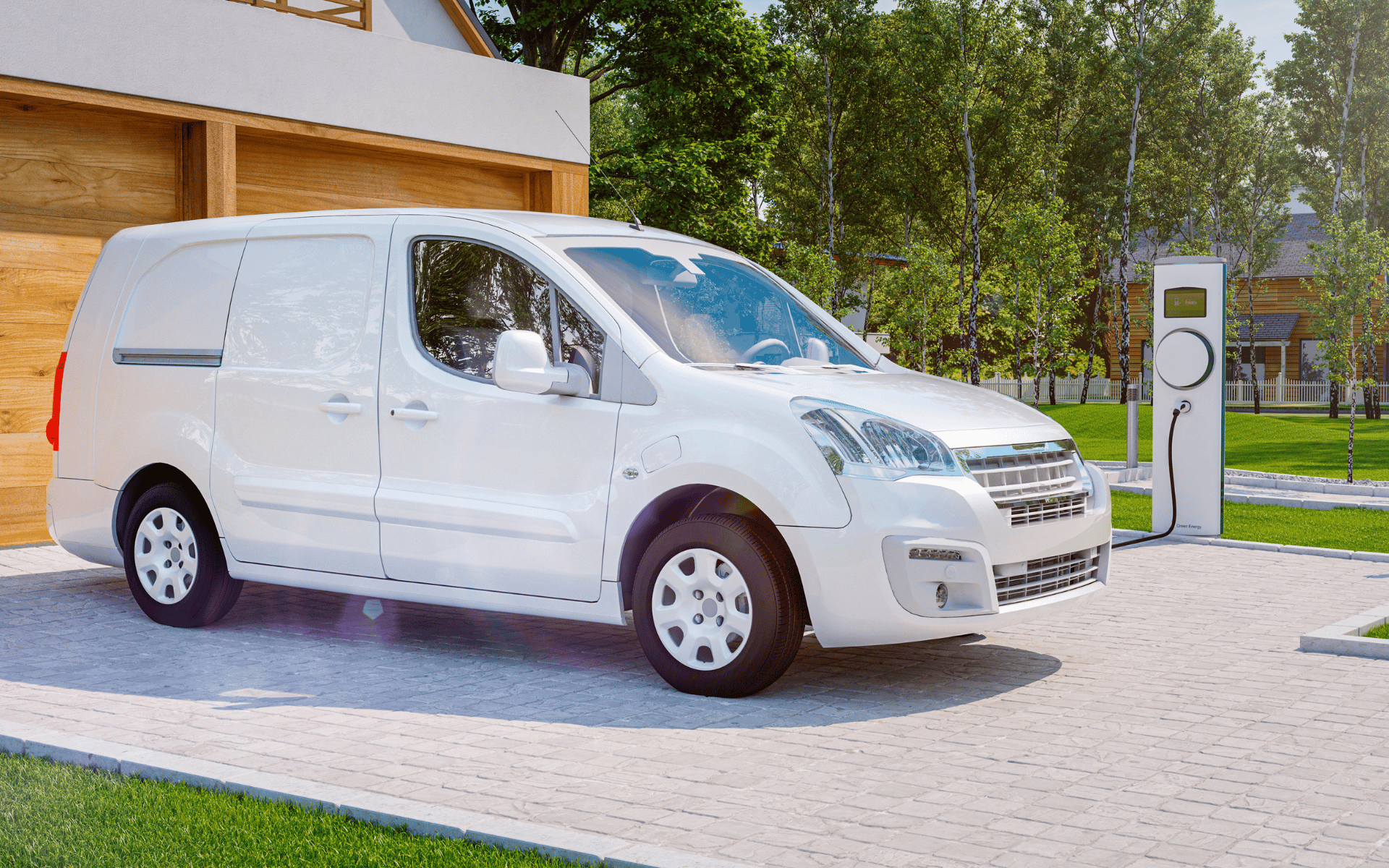Planning Your Fleet Electrification

4 Min. Read
The USPS is currently overhauling its entire fleet. Out of the new 84,500 USPS vehicles, 40% will be electric and will set a precedent for fleet electrification planning on a large scale.
Making the switch to electric vehicles (EVs) represents a significant shift in a fleet’s business model, but it also comes with other advantages. From cutting costs to reducing your carbon footprint, fleet electrification will shape the future of your organization.
A successful transition to an electric fleet calls for thorough planning and proper execution.
Choosing the right EVs
One of the first steps of the fleet electrification planning process is to narrow down your selection of vehicles.
A majority of EVs are sedans, but some manufacturers now offer SUVs and electric trucks. Vehicles like Ford’s E-Transit van, Rivian’s R1T, and GM’s BrightDrop Zevo 600 are also paving the way for green last-mile deliveries, and Amazon is embracing this trend with a project to use electric vans in 100 cities for the holidays.
Think about your goals and needs when comparing EVs. For some organizations, fleet electrification is about cutting costs and protecting the business from fluctuating fuel prices. For others, it’s primarily about committing to environmental values. Cargo space may be the main consideration for delivery vehicles and if you offer mobility services, a comfortable interior can be a differentiator.
Range and battery capacity are key considerations regardless of your niche. The good news is that the average range is increasing with the 2022 EV lineup including 14 light-duty vehicles with a range of over 300 miles.
Involving drivers and other team members in this part of the process can be invaluable. Listening to their feedback will help you better understand the vehicle features that will create value for your fleet and your team. Involving your employees will also ensure buy-in for this project at every level of your company.
Which charging solution makes the most sense?
As it stands, a little over 90,000 public charging ports are currently available nationwide. Building a private infrastructure for your fleet is the most viable way to ensure your fleet stays charged.
While Level 3 charging offers faster speeds, the upfront cost makes this solution impractical and regular fast charging can deteriorate EV batteries in the long term.
Level 1 charging is much more affordable as you can use any existing 120-volt outlet and don’t need any charging equipment beyond a cable. However, charging is extremely slow and isn’t realistic for a fleet with daily routes.
Level 2 is the most realistic solution. Charging at this level takes between four to ten hours for an EV and is an even shorter time range for a PHEV. This charging solution uses 240-volt circuits that may require some electrical upgrades, but the upfront cost remains reasonable.
Where will you charge your fleet vehicles?
Planning a fleet electrification project from scratch gives you the flexibility to incorporate charging where it’s most convenient.
Some fleets opt for a centralized hub. This approach makes sense if routes have to begin at a warehouse or other central location.
Another option is to make use of at-home charging. This decentralized model is ideal if your drivers are providing a service and don’t need to pick up packages in the morning. With this model, you’ll have multiple charging points that extend the area you can cover with your fleet instead of having to limit yourself to a shorter radius around your charging hub. Additionally, this option helps drivers save time as they can leave directly from home.
Note that you can extend your range further by using a route optimization strategy to take advantage of public and private charging stations for any top-off charging as needed.
Compare incentives and credits
Once you have a better idea of how much your new electric fleet vehicles and charging infrastructure will cost, the next step of the fleet electrification planning process is to look into incentives and other credits.
There are over 600 programs at the federal, state, city, and utility levels designed to support commercial EV adoption.
For instance, Arizona Public Service offers up to four free charging stations to qualifying fleets. In California, fleet owners can apply for vouchers toward the purchase of electric vehicles through the California Air Resources Board. For fleets based in Oregon, the state offers an Energy Loan Program designed to lower the cost of financing fleet vehicles.
Build new partnerships
Experts believe that fleet electrification will accelerate even more in the near future. As an early adopter, you have the unique advantage to position yourself as an environmental leader and negotiate new partnerships.
Public-private partnerships can help you integrate the existing public charging infrastructure into your route planning at a lower cost. You can also reach out to your utility provider to negotiate a lower rate or explore using any leftover charge in your fleet vehicles to power the local grid with a bidirectional charging solution.
You’ll also need to partner with a reliable installer for your charging infrastructure. The right partner can recommend the best charging equipment for your needs, perform the installation and any necessary electrical upgrades, and take care of routine or other needed maintenance.
Fleet electrification planning with Qmerit
Qmerit simplifies fleet electrification by helping fleets and companies overcome the complexities of their installation. We provide a simple and seamless installation experience with top-quality service you can trust, helping fleets budget and control costs while tracking every step of the process.
See how Qmerit’s expert team is ready to make your @Home EV charging installation simple, with guaranteed satisfaction and support.
If you want help determining your EV ROI and are interested in switching to a distributed electric fleet, contact us today.
